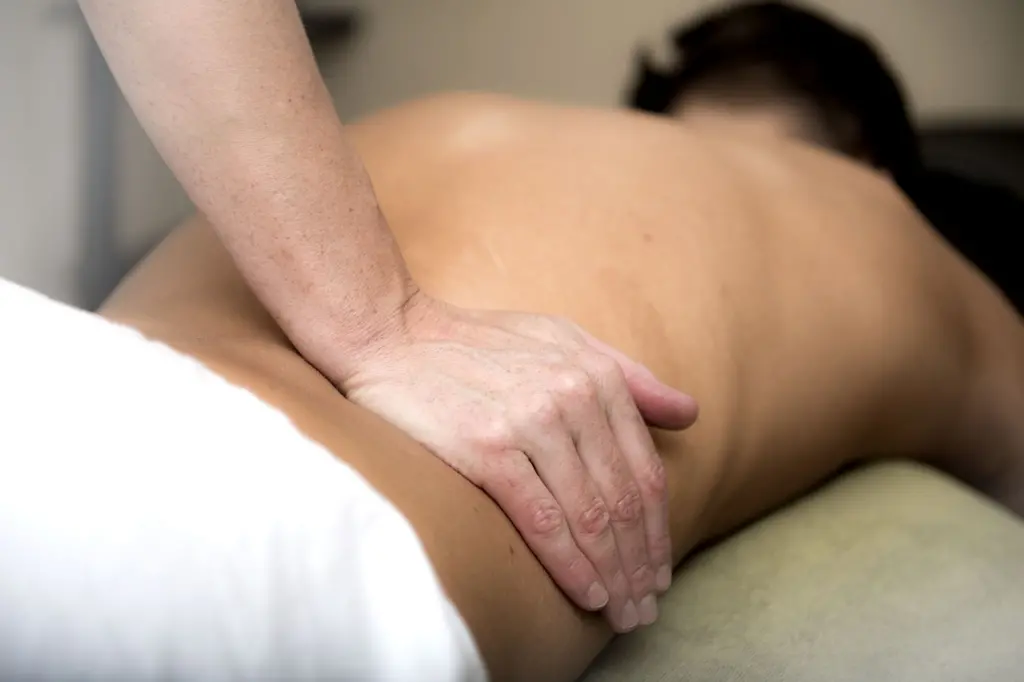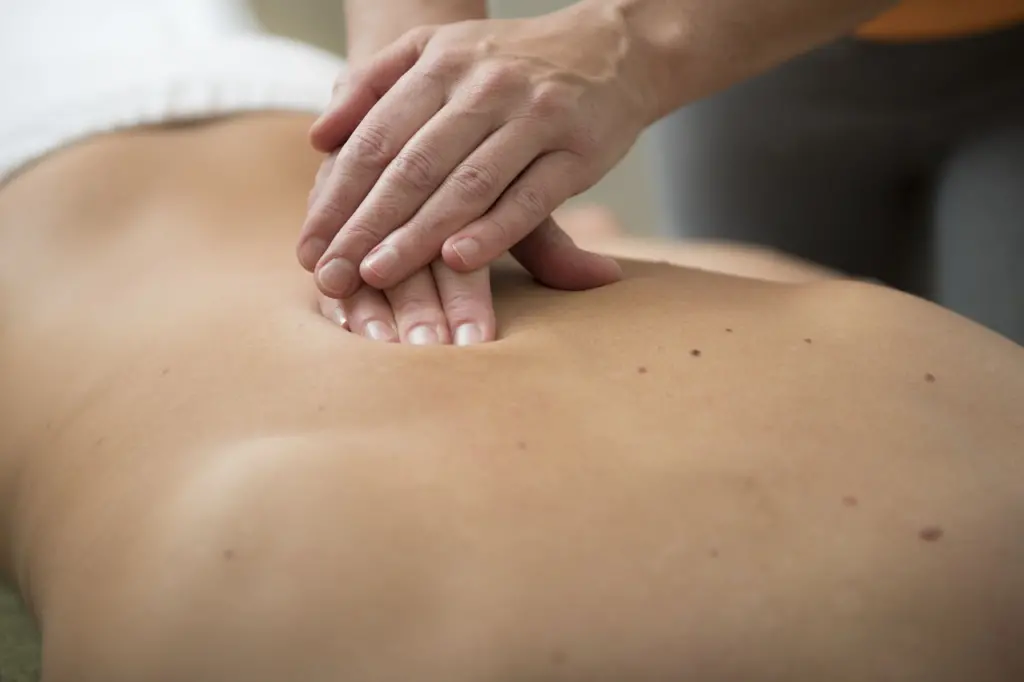- Introduction: The Intersection of Traditional Thai Massage and Sciatica Relief
- Understanding Sciatica and Its Impacts
- Evidence-Based Benefits for Sciatica
- Integrating Thai Massage into a Therapeutic Sciatica Strategy
- Specific Thai Massage Techniques for Sciatica Relief
- The Broader Implications for Health and Wellness
- Conclusion
Introduction: The Intersection of Traditional Thai Massage and Sciatica Relief
In the landscape of contemporary health and well-being, sciatica stands out as a pervasive affliction that transcends occupational boundaries, affecting a broad spectrum of the population. The quest for relief often leads sufferers down a path of various treatments, from conventional medicine to alternative therapies. Thai massage, with its rich heritage anchored in the healing traditions of Thailand, has emerged as a particularly effective modality for addressing the complex symptoms of sciatica. Unlike many modern interventions that focus solely on symptom relief, Thai massage offers a holistic approach, aiming to restore balance and harmony within the body.
The allure of Thai massage lies in its dynamic integration of various techniques, including rhythmic pressing, targeted stretching, and strategic pressure on energy lines and points throughout the body. This time-honored practice, which has been refined over centuries, provides not just temporary respite, but a potential pathway to long-term wellness. For those struggling with the sharp, sometimes debilitating pain that characterizes sciatica, Thai massage presents an avenue for natural pain management that is both non-invasive and nurturing.
Sciatica, characterized by pain, tingling, or numbness along the sciatic nerve pathway, can be a symptom of various underlying issues such as a herniated disk, spinal stenosis, or piriformis syndrome. The traditional techniques of Thai massage, particularly those that are part of the nuanced repertoire of a skilled practitioner, can be adapted to meet the unique challenges presented by each individual’s experience of sciatica. By increasing circulation, enhancing flexibility, and releasing muscle tension, Thai massage aims to alleviate the pressure on the sciatic nerve and encourage the body’s innate healing processes.
As we delve into the principles and applications of Thai massage for sciatic relief, it becomes clear that this is not merely a treatment, but a journey into a more profound understanding of body mechanics and well-being. The integrative approach of Thai massage, encompassing both physical and energetic facets of health, aligns with contemporary desires for treatments that not only heal the body but also cater to the mind and spirit. This article is an invitation to explore the potential of Thai massage as a complementary approach to sciatica management, one that has been embraced by diverse individuals from office workers enduring prolonged sitting to athletes seeking performance recovery. It’s a testament to the adaptability and enduring relevance of Thai massage in our modern search for natural health solutions.

Understanding Sciatica and Its Impacts
The Anatomy of Sciatica
Sciatica is a term that resonates with discomfort, often painting a picture of pain that radiates along the path of the sciatic nerve, which branches from the lower back through the hips and buttocks and down each leg. Typically, sciatica affects only one side of the body, its hallmark being a pain that can vary from a mild ache to a sharp, burning sensation, or even an excruciating discomfort that can incapacitate.
At the core of sciatica’s anatomy lies its causative factors: a herniated disk, bone spur on the spine, or narrowing of the spine (spinal stenosis) compressing part of the nerve. This compression causes inflammation, pain, and often some numbness in the affected leg. Pain patterns can vary significantly from infrequent and irritating to constant and incapacitating.
Common Triggers of Sciatic Pain
The triggers of sciatica are as varied as the individuals it affects. They range from lumbar spinal stenosis, which is a narrowing of the spinal canal that compresses the nerves, to degenerative disc disease where the discs that cushion the vertebrae of the spine break down. Other triggers include pregnancy, which can cause sciatic pain due to the increased pressure on the sciatic nerve, muscle tension, overweight, improper lifting techniques, and sedentary lifestyle habits, particularly those that involve prolonged periods of sitting.
Understanding these triggers is vital because it underscores the importance of a therapeutic approach that is both preventative and responsive. Thai massage, with its holistic approach to the body’s musculature and nervous system, stands out as a potential ally in not just mitigating the painful episodes of sciatica but also in addressing its root causes.
In the following section, we will delve deeper into the evidence-based benefits of Thai massage for those suffering from sciatica and how it can be an integral part of a comprehensive pain management strategy.

Evidence-Based Benefits for Sciatica
The quest for non-invasive treatments for sciatica often leads patients and practitioners to explore the benefits of Thai massage. Grounded in centuries-old techniques, this form of massage has been subjected to the scrutiny of modern science, revealing its potential as an effective remedy for sciatic symptoms.
The Scientific Perspective on Thai Massage for Sciatica Relief
Research, such as that presented in an article available on ScienceDirect, provides empirical support for the role of Thai massage in the management of sciatic pain. The study highlights Thai massage’s effectiveness in addressing the lower back and piriformis muscle areas commonly associated with sciatic nerve compression. This research is particularly valuable as it lends credibility to Thai massage, framing it not just as a relaxation tool but as a therapeutic intervention for specific health conditions.
Unraveling the Techniques: How Thai Massage Alleviates Sciatica
The methods employed in Thai massage, such as stretching and deep pressure along the body’s energy lines, mirror the mechanisms through which sciatica can be alleviated. The deep and methodical pressure applied during a Thai massage session is suggested to reduce the muscular tension that may contribute to the pinching of the sciatic nerve. Furthermore, the stretching techniques can help increase spinal mobility, potentially relieving the pressure on the sciatic nerve.
Beyond Anecdotal Evidence: Thai Massage Enters the Scientific Arena
The acknowledgment of Thai massage in scientific literature broadens its appeal, making it a more attractive option for those who rely on evidence-based practice. The ScienceDirect article provides a bridge between traditional healing arts and contemporary healthcare modalities, offering a form of validation for Thai massage that aligns with the demands of modern medicine for data-backed treatments.
The implications of this research are significant for the practice of Thai massage, as it provides a solid foundation upon which practitioners can build their approach to treating clients with sciatica. It also empowers patients to make informed decisions about incorporating Thai massage into their pain management plan, knowing that its efficacy is supported by scientific inquiry.
In the subsequent sections, we’ll delve deeper into the practical application of Thai massage for sciatica, including technique-specific discussions and considerations for a therapeutic strategy tailored to individual needs.
Integrating Thai Massage into a Therapeutic Sciatica Strategy
Developing a comprehensive approach to sciatica treatment often involves an integration of various modalities, and Thai massage is increasingly recognized as a key component of such multifaceted strategies.
Tailoring Thai Massage to Individual Needs
A one-size-fits-all methodology is seldom effective when it comes to treating conditions like sciatica, where symptoms and severity can greatly vary from person to person. It is crucial for massage therapists to tailor their Thai massage techniques to address individual presentations of sciatica. Adjusting the pressure, focusing on specific sen lines, and customizing the stretching routines can all contribute to a more personalized and effective treatment outcome.
The Interplay of Techniques for Maximum Benefit
Combining different Thai massage maneuvers can synergistically enhance the therapeutic effects. For instance, gentle stretching can prepare the muscles for deeper pressure techniques, while rhythmic compressions can facilitate improved circulation in the affected areas. The thoughtful combination of these techniques can help alleviate the pressure on the sciatic nerve and contribute to longer-lasting relief from pain.
Beyond the Massage Table: Complementary Practices and Recommendations
While Thai massage can be a powerful tool in the therapeutic arsenal against sciatica, it is often most effective when combined with other health and wellness practices. Recommendations for clients might include lifestyle adjustments, physical therapy exercises, and mindfulness practices, all of which can support the benefits gained from Thai massage sessions.
Specific Thai Massage Techniques for Sciatica Relief
Exploring the unique aspects of Thai massage reveals why it might be particularly effective for individuals suffering from sciatica.
Targeting the Lower Back and Piriformis
One of the cornerstones of Thai massage for sciatica involves focused work on the lower back and piriformis muscle. Techniques that apply methodical pressure to these areas can help reduce the muscular tension that often contributes to sciatic nerve compression.
Stretching: The Key to Flexibility and Nerve Relief
The incorporation of stretching into Thai massage sessions aims to enhance spinal and pelvic flexibility, which can be particularly beneficial for sciatic pain sufferers. These stretches can help to elongate the spine, create space between the vertebrae, and alleviate the direct pressure on the sciatic nerve.
Energy Lines and Sciatica: A Thai Massage Perspective
Thai massage’s approach to the body’s energy lines, or sen lines, may also play a role in managing sciatica. By working along these lines, a Thai massage therapist can influence the flow of energy, potentially reducing inflammation and the resultant pain associated with sciatic nerve irritation.

The Broader Implications for Health and Wellness
The relevance of Thai massage extends beyond the treatment of sciatica, touching on broader themes in health and wellness.
A Holistic View of Pain Management
Thai massage embodies a holistic approach to pain management, one that acknowledges the interconnectedness of body systems. This perspective is increasingly validated by research, such as that from ScienceDirect, affirming the importance of considering the whole body when treating localized pain.
The Preventative Potential of Thai Massage
Regular Thai massage sessions may have preventative benefits, potentially reducing the likelihood of sciatica flare-ups. By maintaining flexibility, promoting good circulation, and encouraging a balanced energy flow, Thai massage can contribute to overall spine health and function.
Stress, Emotions, and Sciatica: The Mind-Body Connection
The mind-body connection is an essential consideration in Thai massage. Stress and emotional well-being can influence the experience of pain, and Thai massage, known for its relaxing properties, may also aid in managing the emotional and psychological aspects associated with chronic pain conditions like sciatica.
Conclusion
In summarizing the potential of Thai massage for the relief of sciatica, it is clear that the practice is not merely an ancient art but a modern ally grounded in evidence-based research. The studies highlighted, particularly those found in scientific repositories like ScienceDirect, provide a foundation for Thai massage as a credible and effective approach to managing sciatic pain.
Thai massage offers more than temporary relief; it encourages a holistic balance, potentially reducing the frequency and intensity of sciatica symptoms. The artful blending of stretching, pressure, and energy line work characterizes Thai massage as a comprehensive modality, capable of addressing the multifaceted nature of sciatica.
As we consider the broader implications of Thai massage for health and wellness, we recognize its role in pain management extends beyond physical symptoms. The practice also supports emotional and psychological well-being, factors that are intrinsically linked to the experience of pain. Thai massage, therefore, can be seen as a conduit to overall well-being—a natural extension of a balanced lifestyle.
As healthcare continues to evolve, incorporating a blend of tradition and innovation, Thai massage remains relevant and respected. It stands as a testament to the enduring wisdom of traditional healing practices, reaffirmed by the rigors of scientific validation. For those seeking a natural path to managing sciatica, Thai massage represents a harmonious synthesis of relaxation, therapy, and science—an enduring remedy for a modern ailment.

